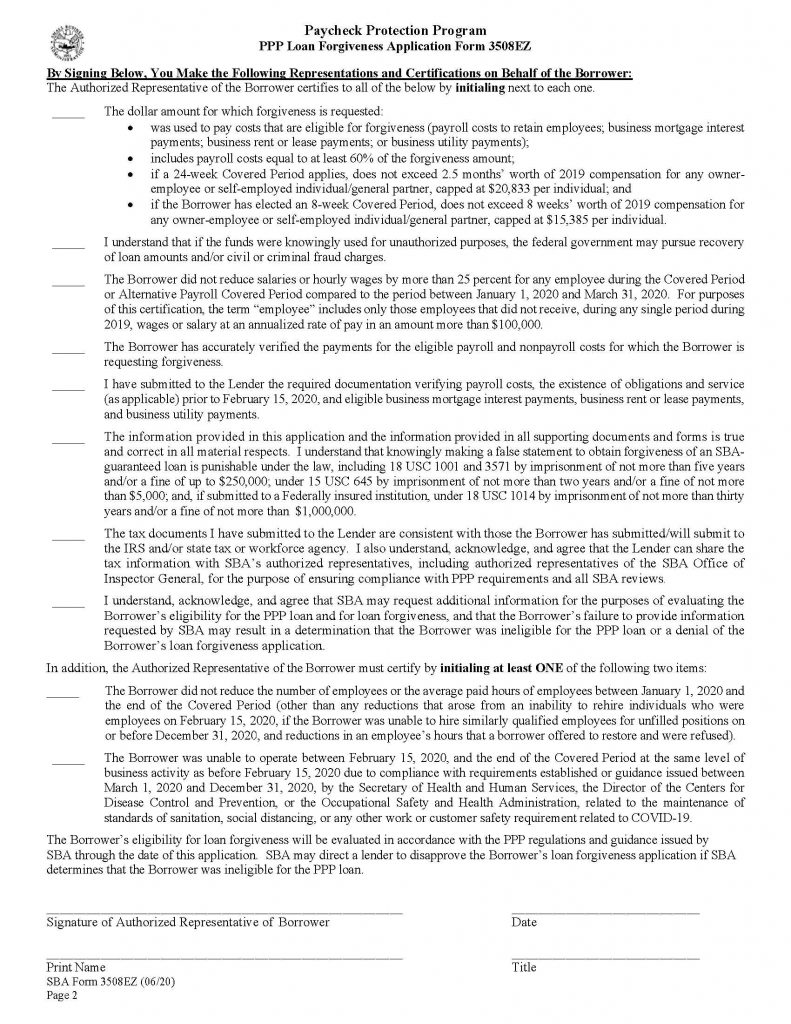Rev. Proc. 2020-37
SECTION 1. PURPOSE
This revenue procedure provides: (1) tables of limitations on depreciation deductions for owners of passenger automobiles first placed in service by the taxpayer during calendar year 2020; and (2) a table of amounts that must be included in income by lessees of passenger automobiles first leased by the taxpayer during calendar year 2020. The tables detailing these depreciation limitations and lessee inclusion amounts reflect the automobile price inflation adjustments required by § 280F(d)(7). For purposes of this revenue procedure, the term “passenger automobiles” includes trucks and vans.
SECTION 2. BACKGROUND
.01 For owners of passenger automobiles, § 280F(a) imposes dollar limitations on the depreciation deduction for the year the taxpayer places the passenger automobile in service and for each succeeding year. For passenger automobiles placed in service after 2018, § 280F(d)(7) requires the Internal Revenue Service to increase the amounts allowable as depreciation deductions by a price inflation adjustment amount that is determined using the automobile component of the Chained Consumer Price Index forall Urban Consumers published by the Department of Labor.
.02 Section 168(k)(1) provides that, in the case of qualified property, the depreciation deduction allowed under § 167(a) for the taxable year in which the property is placed in service includes an allowance equal to the applicable percentage of the property’s adjusted basis (hereinafter, referred to as “§ 168(k) additional first year depreciation deduction”). Pursuant to § 168(k)(6)(A), the applicable percentage is 100 percent for qualified property acquired and placed in service after September 27, 2017, and placed in service before January 1, 2023, and is phased down 20 percent each year for property placed in service through December 31, 2026. Pursuant to § 168(k)(8)(D)(i), no § 168(k) additional first year depreciation deduction is allowed or allowable for qualified property acquired by the taxpayer before September 28, 2017, and placed in service by the taxpayer after 2019. For qualified property acquired and placed in service after September 27, 2017, § 168(k)(2)(F)(i) increases the first-year depreciation allowed under § 280F(a)(1)(A)(i) by $8,000.
.03 Tables 1 and 2 of this revenue procedure provide depreciation limitations for passenger automobiles placed in service during calendar year 2020. Table 1 provides depreciation limitations for passenger automobiles acquired by the taxpayer after September 27, 2017, and placed in service by the taxpayer during calendar year 2020, for which the § 168(k) additional first year depreciation deduction applies. Table 2 provides depreciation limitations for passenger automobiles placed in service during calendar year 2020 for which no § 168(k) additional first year depreciation deduction applies. The § 168(k) additional first year depreciation deduction does not apply for 2020 if the taxpayer: (1) did not use the passenger automobile during 2020 more than
50 percent for business purposes; (2) elected out of the § 168(k) additional first year depreciation deduction pursuant to § 168(k)(7) for the class of property that includes passenger automobiles; (3) acquired the passenger automobile used and the acquisition of such property did not meet the acquisition requirements in
- 168(k)(2)(E)(ii); or (4) acquired the passenger automobile before September 28, 2017, and placed it in service after 2019.
.04 Section 280F(c)(2) requires a reduction to the amount of deduction allowed to the lessee of a leased passenger automobile. Pursuant to § 280F(c)(3), the reduction must be substantially equivalent to the limitations on the depreciation deductions imposed on owners of passenger automobiles. Under § 1.280F-7(a) of the Income Tax Regulations, this reduction requires a lessee to include in gross income an amount determined by applying a formula to the amount obtained from a table. Table 3 applies to lessees of passenger automobiles. This table shows income inclusion amounts for a range of fair market values for each taxable year after the passenger automobile is first leased.
SECTION 3. SCOPE
.01 The limitations on depreciation deductions in section 4.01(2) of this revenue procedure apply to passenger automobiles, other than leased passenger automobiles, that are placed in service by the taxpayer in calendar year 2020, and continue to apply for each taxable year that the passenger automobile remains in service.
.02 The table in section 4.02 of this revenue procedure applies to leased passenger automobiles for which the lease term begins during calendar year 2020. Lessees of these passenger automobiles must use these tables to determine the inclusion amount for each taxable year during which the passenger automobile is leased. See Rev. Proc. 2015-19, 2015-8 I.R.B. 656, as amplified and modified by section 4.03 of Rev. Proc. 2016-23, 2016-16 I.R.B. 581, for passenger automobiles first leased during calendar year 2015, Rev. Proc. 2016-23 for passenger automobiles first leased during calendar year 2016, Rev. Proc. 2017-29, 2017-14 I.R.B. 1065, for passenger automobiles first leased during calendar year 2017, Rev. Proc. 2018-25, 2018-18 I.R.B. 543, for passenger automobiles first leased during calendar year 2018, and Rev. Proc. 2019-26, 2019-24 I.R.B. 1323, for passenger automobiles first leased during calendar year 2019. SECTION 4. APPLICATION
.01 Limitations on Depreciation Deductions for Certain Automobiles.
(1) Amount of the inflation adjustment. Under § 280F(d)(7)(B)(i), the automobile price inflation adjustment for any calendar year is the percentage (if any) by which the C-CPI-U automobile component for October of the preceding calendar year exceeds the automobile component of the CPI (as defined in § 1(f)(4)) for October of 2017, multiplied by the amount determined under § 1(f)(3)(B). The amount determined under § 1(f)(3)(B) is the amount obtained by dividing the new vehicle component of the C-CPI-U for calendar year 2016 by the new vehicle component of the CPI for calendar year 2016, where the C-CPI-U and the CPI for calendar year 2016 means the average of such amounts as of the close of the 12-month period ending on August 31, 2016. Section 280F(d)(7)(B)(ii) defines the term “C-CPI-U automobile component” as the automobile component of the Chained Consumer Price Index for All Urban Consumers as described in § 1(f)(6). The product of the October 2017 CPI new vehicle component (144.868) and the amount determined under § 1(f)(3)(B) (0.694370319) is 100.592.
The new vehicle component of the C-CPI-U released in November 2019 was 101.332 for October 2019. The October 2019 C-CPI-U new vehicle component exceeded the product of the October 2017 CPI new vehicle component and the amount determined under § 1(f)(3)(B) by 0.74 (101.332 – 100.592). The percentage by which the C-CPI-U new vehicle component for October 2019 exceeds the product of the new vehicle component of the CPI for October of 2017 and the amount determined under § 1(f)(3)(B) is 0.736 percent (0.74/100.592 x 100%), the automobile price inflation adjustment for 2020 for passenger automobiles. The dollar limitations in § 280F(a) are therefore multiplied by a factor of 0.00736, and the resulting increases, after rounding to the nearest $100, are added to the 2018 limitations to give the depreciation limitations applicable to passenger automobiles for calendar year 2020. This adjustment applies to all passenger automobiles that are first placed in service in calendar year 2020.
(2) Amount of the limitation. Tables 1 and 2 contain the dollar amount of the depreciation limitation for each taxable year for passenger automobiles a taxpayer places in service during calendar year 2020. Use Table 1 for a passenger automobile to which the § 168(k) additional first year depreciation deduction applies that is acquired by the taxpayer after September 27, 2017, and placed in service by the taxpayer during calendar year 2020; and Table 2 for a passenger automobile for which no § 168(k) additional first year depreciation deduction applies.
REV. PROC. 2020-37 TABLE 1
DEPRECIATION LIMITATIONS FOR PASSENGER AUTOMOBILES ACQUIRED
AFTER SEPTEMBER 27, 2017, AND PLACED IN SERVICE DURING CALENDAR
YEAR 2020, FOR WHICH THE § 168(k) ADDITIONAL FIRST YEAR DEPRECIATION
DEDUCTION APPLIES
| Tax Year | Amount |
| 1st Tax Year | $18,100 |
| 2nd Tax Year | $16,100 |
| 3rd Tax Year | $9,700 |
| Each Succeeding Year | $5,760 |
REV. PROC. 2020-37 TABLE 2
DEPRECIATION LIMITATIONS FOR PASSENGER AUTOMOBILES
PLACED IN SERVICE DURING CALENDAR YEAR 2020 FOR WHICH NO § 168(k)
ADDITIONAL FIRST YEAR DEPRECIATION DEDUCTION APPLIES
| Tax Year | Amount |
| 1st Tax Year | $10,100 |
| 2nd Tax Year | $16,100 |
| 3rd Tax Year | $9,700 |
| Each Succeeding Year | $5,760 |
.02 Inclusions in Income of Lessees of Passenger Automobiles.
A taxpayer must follow the procedures in § 1.280F-7(a) for determining the income inclusion amounts for passenger automobiles first leased in calendar year 2020. In applying these procedures, lessees of passenger automobiles should use Table 3 of this revenue procedure.
| | | | | | |
| $50,000 | $51,000 | 0 | 1 | 0 | 2 | 2 |
| 51,000 | 52,000 | 2 | 6 | 9 | 10 | 13 |
| 52,000 | 53,000 | 5 | 11 | 17 | 20 | 24 |
| 53,000 | 54,000 | 7 | 17 | 24 | 30 | 35 |
| 54,000 | 55,000 | 10 | 22 | 32 | 39 | 46 |
| 55,000 | 56,000 | 12 | 27 | 41 | 48 | 57 |
| 56,000 | 57,000 | 15 | 32 | 49 | 58 | 68 |
| 57,000 | 58,000 | 17 | 38 | 56 | 68 | 79 |
| 58,000 | 59,000 | 19 | 44 | 64 | 77 | 90 |
| 59,000 | 60,000 | 22 | 49 | 72 | 87 | 100 |
REV. PROC. 2020-37 TABLE 3
DOLLAR AMOUNTS FOR PASSENGER AUTOMOBILES
WITH A LEASE TERM BEGINNING IN CALENDAR YEAR 2020
Fair Market Value of
Passenger AutomobileOver Not Over | | Tax Year During Lease | |
| 1st | 2nd | 3rd | 4th | 5th & later |
| 60,000 | 62,000 | 26 | 56 | 84 | 102 | 117 |
| 62,000 | 64,000 | 30 | 68 | 99 | 121 | 139 |
| 64,000 | 66,000 | 35 | 78 | 116 | 139 | 161 |
| 66,000 | 68,000 | 40 | 89 | 131 | 159 | 183 |
| 68,000 | 70,000 | 45 | 99 | 148 | 177 | 205 |
| 70,000 | 72,000 | 50 | 110 | 163 | 197 | 227 |
| 72,000 | 74,000 | 55 | 121 | 179 | 215 | 249 |
| 74,000 | 76,000 | 60 | 131 | 195 | 235 | 271 |
| 76,000 | 78,000 | 64 | 142 | 211 | 254 | 293 |
| 78,000 | 80,000 | 69 | 153 | 227 | 272 | 315 |
| 80,000 | 85,000 | 78 | 172 | 254 | 306 | 353 |
| 85,000 | 90,000 | 90 | 198 | 295 | 353 | 408 |
| 90,000 | 95,000 | 102 | 225 | 334 | 401 | 463 |
| 95,000 | 100,000 | 114 | 252 | 373 | 449 | 518 |
| 100,000 | 110,000 | 133 | 292 | 433 | 520 | 600 |
| 110,000 | 120,000 | 157 | 345 | 513 | 615 | 710 |
| 120,000 | 130,000 | 181 | 399 | 592 | 710 | 820 |
| 130,000 | 140,000 | 206 | 452 | 671 | 805 | 931 |
| 140,000 | 150,000 | 230 | 506 | 750 | 901 | 1,040 |
| 150,000 | 160,000 | 254 | 559 | 830 | 996 | 1,150 |
| 160,000 | 170,000 | 279 | 612 | 909 | 1,091 | 1,260 |
| 170,000 | 180,000 | 303 | 666 | 988 | 1,186 | 1,370 |
| 180,000 | 190,000 | 327 | 720 | 1,067 | 1,281 | 1,480 |
| 190,000 | 200,000 | 351 | 773 | 1,147 | 1,377 | 1,589 |
| 200,000 | 210,000 | 376 | 826 | 1,227 | 1,471 | 1,700 |
| 210,000 | 220,000 | 400 | 880 | 1,306 | 1,566 | 1,810 |
| 220,000 | 230,000 | 424 | 934 | 1,385 | 1,661 | 1,920 |
| 230,000 | 240,000 | 449 | 987 | 1,464 | 1,757 | 2,029 |
| 240,000 | and over | 473 | 1,040 | 1,544 | 1,852 | 2,139 |
SECTION 5. EFFECTIVE DATE
This revenue procedure applies to passenger automobiles that a taxpayer first places in service or first leases during calendar year 2020.














